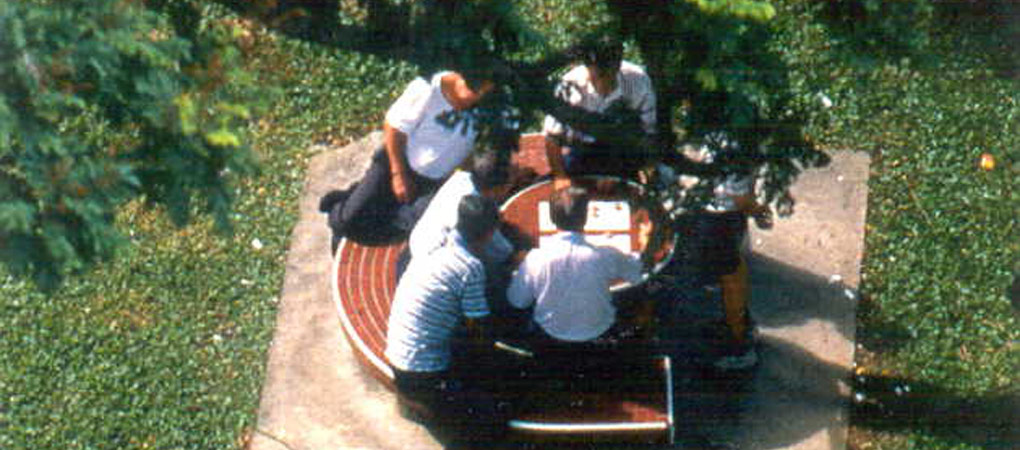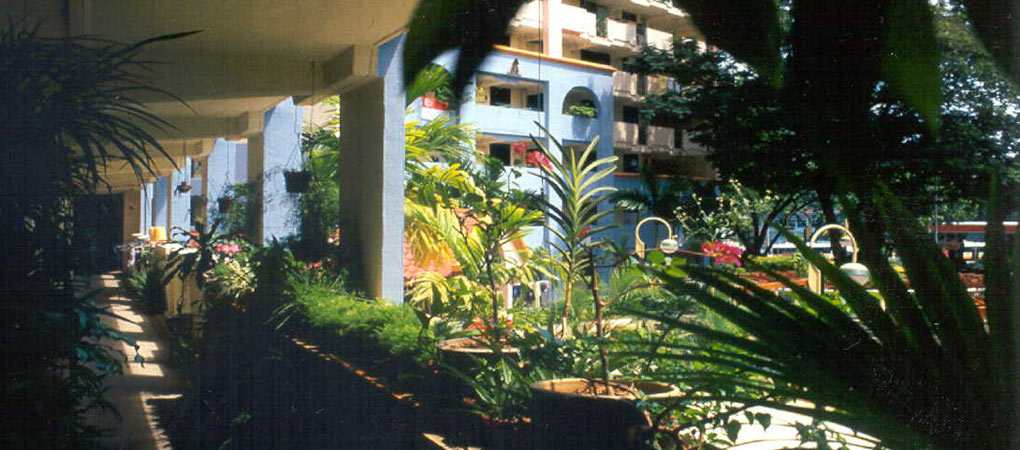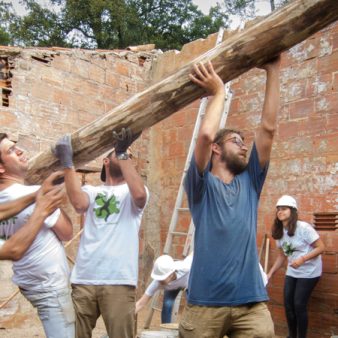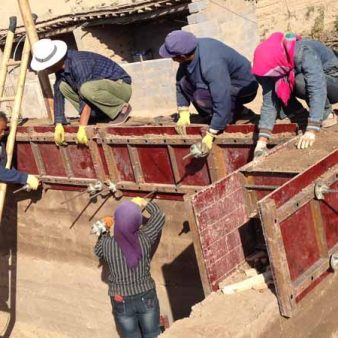The Toa Payoh Town Renewal Programme is the first in a series of government-led initiatives to revitalise the early new towns built in Singapore that are now in need of refurbishment. Comprehensive upgrading of residential blocks, improvement of community facilities and road networks have been carried out after wide ranging consultation with the residents. The renewal programme also seeks to address the changing needs of the citizens as they become increasingly older by retrofitting their apartments to meet their needs and through the provision of social centres and care and support delivered to their homes. Financial mechanisms have been introduced by which older homeowners can release some of the equity in their homes to increase their incomes.
Project Description
Aims and Objectives
The project aim is to systematically redevelop the Toa Payoh new town to bring it up to the standard of the latest HDB developments .The Housing and Development Board has been responsible for all public housing development in Singapore since the 1960s. This project is designed to:
- address new housing needs;
- ensure that old housing remains viable;
- provide facilities suitable for an ageing population;
- achieve a higher quality built environment;
- make better use of the available land;
- allow residents to retain their ties with the community that they live in.
Toa Payoh (meaning Big Swamp Land) was the first planned satellite town developed by Singapore’s Housing Development Board in the early 1960s to address the overcrowded and unhygienic housing conditions of Singapore’s rapidly increasing population. Covering an area of 422 ha, the scheme housed 190,000 people in 36,000 flats. It was a comprehensively planned settlement, providing all urban facilities for the residents. At that time, emphasis was on quantity and speed of construction and keeping costs low rather than on the quality of the housing and urban environment.
As people became more affluent the younger and more mobile households moved to larger flats or to newer towns where standards of design and facilities were better. The population in 1975 was 190,000 and is currently 115,000. This reduction is partly explained by the fact that average family size has decreased significantly. Of the 36,000 flats in the town, 17,000 have elderly occupants, either living alone (6,000) or with a family (11,000). The government recognised that if left unchecked this trend would lead to a continuous decline in the average disposable income of the residents of the new towns. As a result the government formulated the Estate Renewal Strategy – a comprehensive strategy for revitalising old towns / estates. Toa Payoh was the first to be involved in this nationwide renewal programme.

The main elements of this comprehensive renewal programme are house and lift upgrading programmes, improved living conditions for older people, sale of some sites to encourage greater diversity of tenure, renewal of the town centre , provision of new community facilities and improvement of the road networks. As the population of Singapore ages it is a particular concern to improve the living conditions of older people, both in terms of retrofitting their flats and also through the provision of social centres and care and support services delivered to their homes. The aim is to achieve independent living while assuring residents of help if needed. For those aged over 55, a financial scheme has been developed to ensure that surplus sale proceeds from when owners downsize their properties can be invested to meet retirement needs.
A wide range of public consultation measures (information provision, meetings, residents’ committees) have been implemented to ensure that residents are involved in the decision-making process. The residents’ committee plays an active role in working with the architects on the design. The upgrading programmes only proceed if 75 per cent of the residents vote in favour. In the redevelopment (as opposed to upgrading) projects, the residents are given the opportunity to provide feedback on individual design proposals and can opt for a preferred size flat. Throughout Singapore there have been 109 such opportunities to vote and only one did not meet the 75 per cent approval rating. In this case a new design was prepared.
Where it is not possible to upgrade certain blocks, they are demolished and redeveloped. Those residents who have to be moved from these blocks are offered discounted priced accommodation in the new accommodation (98.5 per cent of residents took up this offer). Residents are able to select replacement flats jointly with their family members or neighbours, so that they can have the chance of selecting adjoining new flats, if they wish.
16 precincts consisting of 105 blocks have been selected as part of the improvement programme. The cost of upgrading each flat is approximately US$16,625 – US$27,710. Ten of the precincts are already completed at a cost of US$253.08 million and a further US$112,684 million is to be spent on those currently being completed. The upgrading costs are shared with the resident so that they will have a stake in the cost. The percentage paid by the resident ranges from 7 per cent to 23 per cent depending on the type of work carried out. The smallest flats have the lowest percentage cost to the resident. Most of the upgrading programmes are funded from the government’s budget surpluses.
Why is it innovative?
- Technical innovation through the use of ‘space adding items,’ i.e. units that are prefabricated off-site and installed by being vertically stacked up along the existing building (to minimise disturbance to residents).
- Advanced scheduling methods allow all internal work in a flat to be completed within 14 working days.
- When redevelopment is necessary, groups of residents are moved collectively to larger accommodation within walking distance of their old flats. The new flats are completed before the old ones are demolished. This helps to ensure social and community continuity.
- Upgrading and enlarging existing apartment blocks with residents living in them with the minimum disturbance.
- Development of the first 40-storey public housing blocks.
What is the environmental impact?
Environmental features are part of the total building design concept, encouraging natural ventilation and lighting and collecting and saving rainwater wherever possible. In the flats, rooms are arranged to maximise cross ventilation and the room depth is designed for optimal use of natural light. Water saving toilet cisterns are used. Greening of the New Town with extensive planting and landscaping ensures a more comfortable and attractive living environment, as well as improving the air quality.
Prefabrication technology results in less construction waste.
Use of brown land and high-density development both serve to reduce the environmental impact of the project. The use of reusable metal forms on the construction sites has resulted in the phasing out of the use of timber for formwork, thereby reducing the number of trees that need to be cut.
Is it financially sustainable?
There has been an increase in the trade of the new town as a result of the revitalisation programme and the increased number of people living and working there. The refurbishment of hawker centres has helped stallholders to offer a modern up-to-date service. Financial schemes to provide annuities for those over 55 by scaling down their accommodation.
Prefabrication technology helps to save money and achieves a higher quality product, translating into value-for-money homes for residents who are buying their homes. Rent levels are not increased after the renewal programme, with all costs being met by the government. Financial packages have been developed to help residents purchase their upgraded flat. Particular schemes for older people (55+) are designed to invest the surpluses generated when they move to smaller accommodation to provide additional pension provision. This $100,000 difference in price when invested can produce a monthly disposable income of $500.
What is the social impact?
The upgrading of flats has made them more suitable for use by older people and those with physical disabilities (wheelchair access, lower control panels on lifts, support rails, non-slip flooring, alarm systems etc.) Four new community centres have been included as part of the refurbishment of the town, with facilities geared to modern needs – cafeterias, reading rooms, dance and music studios, community library etc. A trial project was established to encourage greater interaction between young and old people in the town, with the young people making regular visits to older persons and arranging concerts etc. This has proved highly successful and is now being implemented in 34 other blocks in Singapore.
Evaluation
There is continual feedback and monitoring of all aspects of the programme. Studies of the perceptions of residents are carried out regularly and show a 97.7 per cent overall satisfaction rate, with accessibility to the town centre being ranked the highest, along with sufficient distance from industrial areas and proximity to family members. The town has become a much more popular place in which to live and it has acted as a demonstration model for the rest of the estate renewal that will be taking place throughout Singapore.
Partnership
National government, local community



